Travelling gourmet - unforgettable dining experiences in far-flung places
Four remotely located restaurants offer memorable meals that make it worth the journey
SOME PEOPLE WILL GLADLY GO to the middle of nowhere – far-flung Greenland, the Arctic Circle, a mountain in Peru – to dine at a great restaurant. These places are deemed by such arbiters of culinary excellence as the Michelin Guide to be “worth a detour” (two stars) or “worthy of a special trip” (three stars).
To reach El Bulli, a post-modern mecca perched above a secluded beach in Spain, diners had to navigate a windswept coastal road, far removed from the urban sprawl. They were lured there by a boundary-busting chef and the chance to encounter wildly innovative combinations of tastes and textures that existed nowhere else on earth (white beans and sea urchin foam, anyone?).
El Bulli was both far-to-reach and far-reaching. It closed in 2011 but reopened in June this year as a museum dedicated to its innovative past. It spawned a culinary revolution, some form of which still exists in restaurants such as The Fat Duck, Noma and The French Laundry, inspiring a generation of chefs to shed their inhibitions and – in the world according to Ferran Adria – create, not copy. Not least of all, it provided diners with plenty to ponder on the long drive home.
Ynyshir Eglwys Fach, Machynlleth, Powys, Wales
Deep in the heart of Wales, where sheep graze on rolling hills and towns with hard-to-pronounce names dot lush valleys, chef Gareth Ward has turned a remote restaurant into perhaps the most exciting (and certainly the most unique) dining destination in the UK.
Ynyshir (meaning “long island”) is off the beaten track, a four-and-a-half-hour drive (much of it along country roads) from London, minutes from the southern boundary of Snowdonia National Park. This is not where you’d expect to find the UK Restaurant of the Year for 2022 and 2023 – but that’s just the first of many surprises.
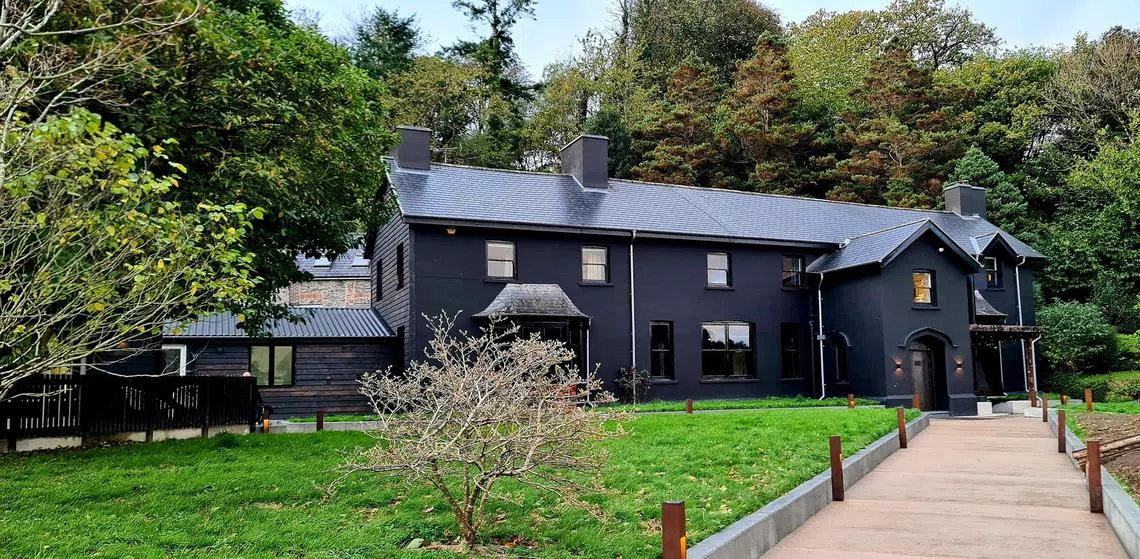
When Ward started as head chef in 2013, Ynyshir was a charming country getaway, set among 14 green acres and not especially known for its cuisine. When the owner died, Ward was given a chance to do his own thing. He turned the hotel into a restaurant-with-rooms, with plenty of attitude thrown in.
The building’s vanilla-white exterior was given an all-black makeover, and the interiors evoke a comfy hunting lodge. In the main dining area, tables are arranged classroom-style with everyone facing the compact open kitchen. Guests are instructed to arrive by 5 pm. They won’t make it to their bedrooms for another five hours.
The opening dish – playfully titled Not French Onion – is an umami-laden, chawanmushi-like broth, prepared at a reception desk next to the front door. A series of snacks is served in a lounge and soft jazz sets the opening mood. Then a DJ pumps up the volume until two dozen dishes later, full-on dance-club techno is thumping over the speakers. Diners can barely hear themselves think. Your typical two-star restaurant this isn’t.
Ynyshir’s anything-goes vibe is purely by design. “Dining out gets a bit too serious,” says Ward. “I hate stuffy service and white tablecloths – it’s about having fun.” He describes his restaurant as “a destination retreat for the best ingredients in the world.” There’s Welsh lamb, Japanese beef, Spanish pork and Irish duck, paired with a variety of Asian-inspired flavours including hoisin (for his version of Peking duck), Nam Jim Jaew Thai dipping sauce, red curry and even Singapore-style chilli crab.
A tongue-in-cheek item is called That First Bite – a delicious one-mouthful take on the Big Mac. “Who doesn’t love McDonald’s?” says Ward. “It’s just messing about, isn’t it? You can mess around but you have to back it up with flavour.”
He goes on: “It’s the food I love to eat, I cook the food I want to eat. Obviously, I believe in what we do, and people love coming to estates like this.” This immersive experience in the Welsh countryside will set you back about S$650 per head, not including room. But there’s quality to burn and the fun factor is dialled way up. Ward enjoys going against the grain and for the most part he succeeds – he has the awards and a long waiting list to prove it. “If you’re doing something good, people will come,” he says.
Nawaya 2517 Yasakacho Kurobe, Kyotango, Kyoto Prefecture
Mention Kyoto and visions of temples, geishas and Sakura season spring to mind. But the Tango Peninsula in northern Kyoto Prefecture offers a different kind of special. This coastal region a two-hour drive (or three-hour train ride) from Kyoto is a welcome change from the busy-ness of the ancient capital. Instead, it’s home to spectacular scenery, hot spring towns, charming fishing villages – and an exceptional restaurant.
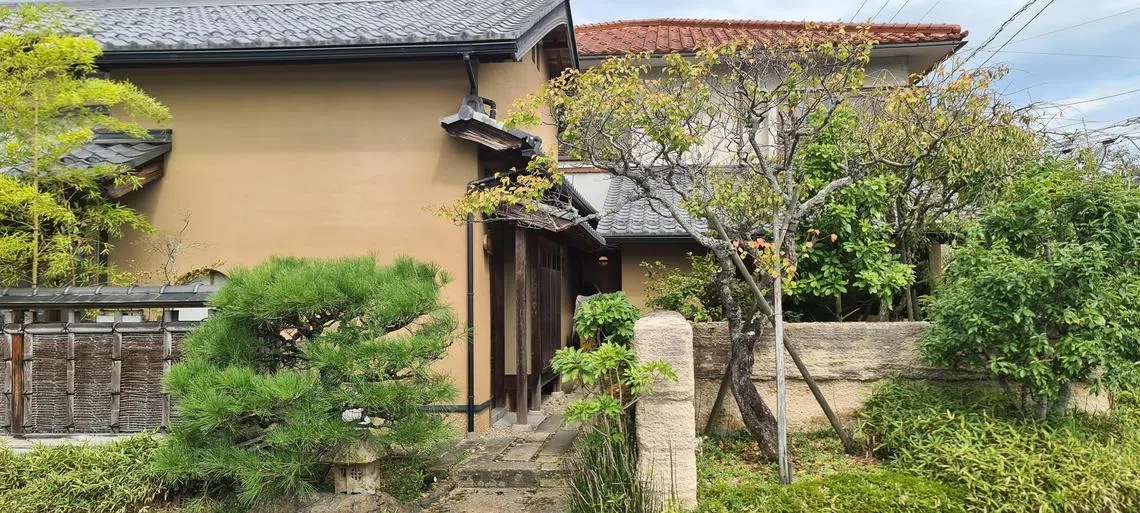
Nawaya, tucked away in a residential neighbourhood near Kyotango City, is a favoured stop for chefs and epicures (prices start at about S$170). This is the domain of Yukinori Yoshioka, a hometown talent who earned his culinary stripes at the renowned Kyoto kaiseki restaurant Wakuden before returning to his roots.
Here, a short drive from the Japan Sea and within walking distance of rice fields and forests, he pays homage to his environment using the seasonal ingredients at his doorstep. First-time guests can expect a meal unlike anything they have experienced before. The same applies to regular customers because “no two meals are the same”, says Yoshioka. “The same dishes are served sometimes, but never in the same composition. That way, it’s always fresh.”
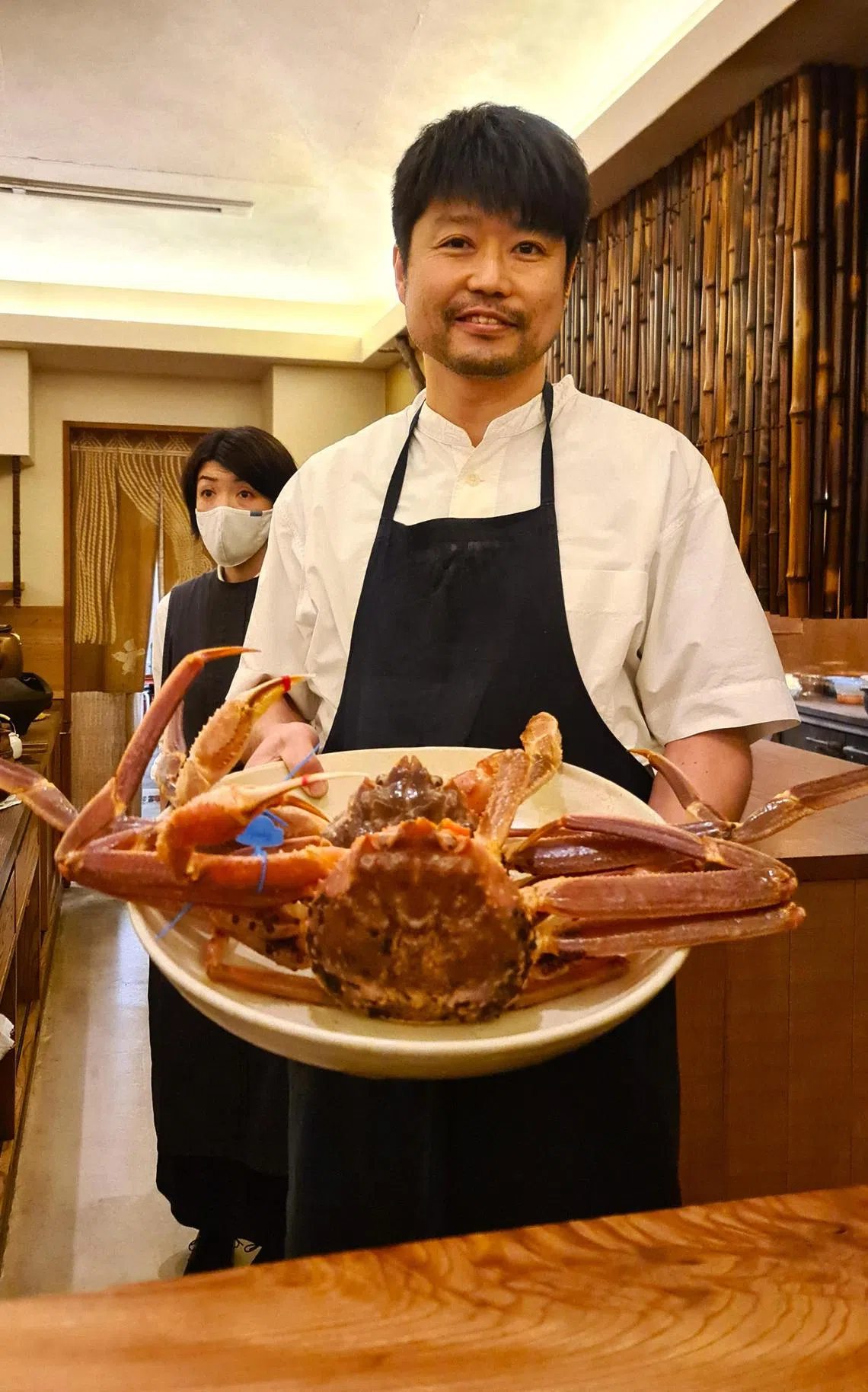
The focus is firmly on seafood and vegetables and the menu changes daily, depending on whether it’s lunch or dinner, the number of bookings and the condition of the ingredients. An L-shape counter separates the chef from his guests. He cooks primarily over a wood fire because open-flame cooking simply tastes great, he says. The first course is always a mouthful of white rice because “the rice is so delicious that I just want my diners to eat it”.
Snow crab is a sought-after winter-season specialty, together with home-grown vegetables and wild grasses. “Since people come all the way to Kyotango, I would like them to eat something that they cannot eat elsewhere,” says Yoshioka. “The taste of the wild has a strong taste and aroma, so I want them to eat food that has great power and can only be eaten at that time.”
He adds: “I take in the scenery that catches my eye every day, what I feel in nature and the natural environment around Nawaya. I accumulate a sense of place. At some point, it all combines to create a new dish that captures a specific moment.” In Chef Yoshioka’s book, the way he cuts vegetables and the exact parts he uses depends on their size and condition.
“I want to convey the beauty of nature,” he says. “There are no special flowers or cherry blossoms in bloom – Tango is beautiful in itself. I think it would be nice to just stare at the ocean waves – I’d be happy if you could feel the goodness – that way, you will be able to enjoy the taste of Nawaya even more.”
Terre Castlemartyr Resort, Cork, Ireland
The history of Castlemartyr village in southwestern Ireland can be traced to the Bronze Age, but its most famous landmark dates back a mere 800 years. Castlemartyr Castle was built by the Knights Templar in 1210 and its ruins now stand on the grounds of a luxury resort. Set within 220 acres of gardens and woodland an easy 30-km drive east of Cork, castle and hotel have been the main attractions in these parts for a long time.
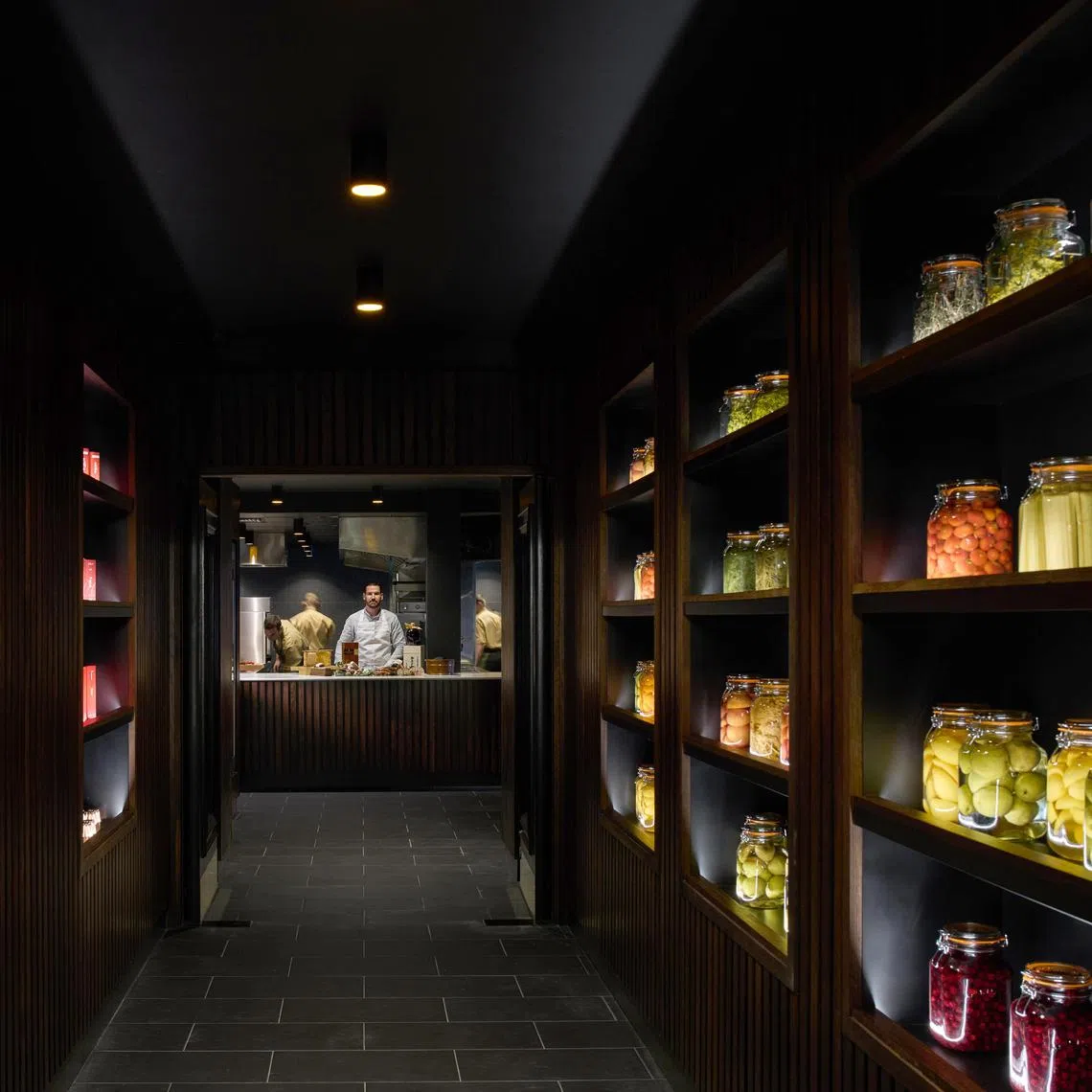
Now there’s a new kid in town, just steps from the castle keep. Fine-dining restaurant Terre opened nine months ago, aiming to make a little history of its own – in the culinary realm. With a Michelin star to its name, this 38-seat restaurant has already made a mark on the once-sleepy local dining scene.
The tasting menu at Terre (around S$160 for lunch, S$300 for dinner) features quality ingredients from Ireland and beyond. Chef Patron Vincent Crepel and his team bring guests on a carefully-curated gastronomic journey that starts in the open kitchen and moves onto other rooms within the resort’s centrepiece – an 18th-century manor house.
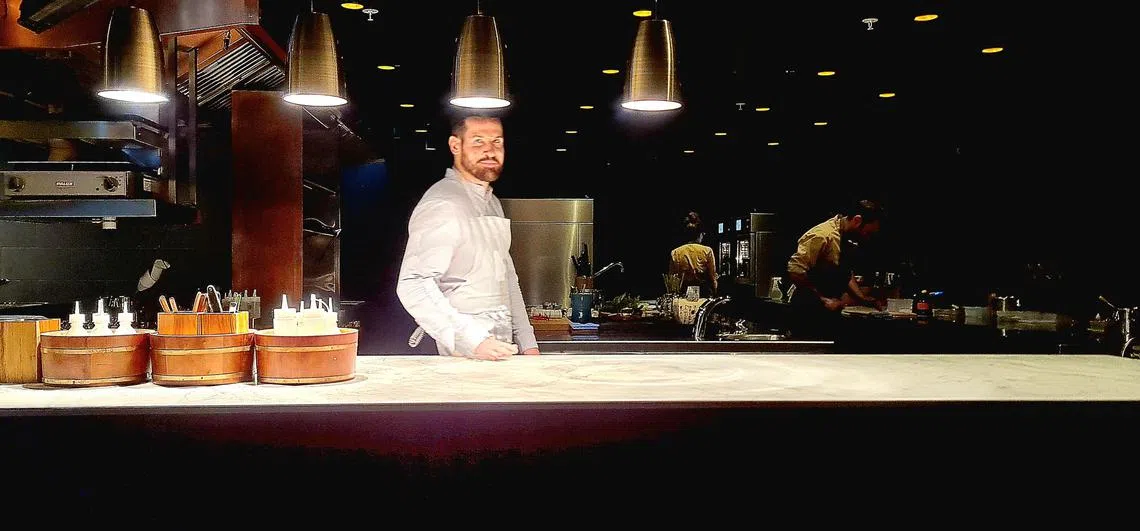
Guests are ushered through a dramatically-lit corridor lined with jars of house-fermented vegetables. At a counter facing the kitchen, they sip champagne and are served a succession of tasty, well-crafted snacks. The action shifts to an elegant dining room where diners enjoy tableside service and take in more views of the castle ruins.
Foodwise, the emphasis is on French technique and Asian flavours – a nod perhaps to Crepel’s heritage and a stint as sous chef at Restaurant Andre in Singapore. “I draw inspiration from the bounty of nature,” he says. Highlight dishes from last autumn’s seasonal menu include tuna belly, tomato water and purple radish followed by cod, caviar and white rose petals. Quail grilled over bincho-tan is the main course.
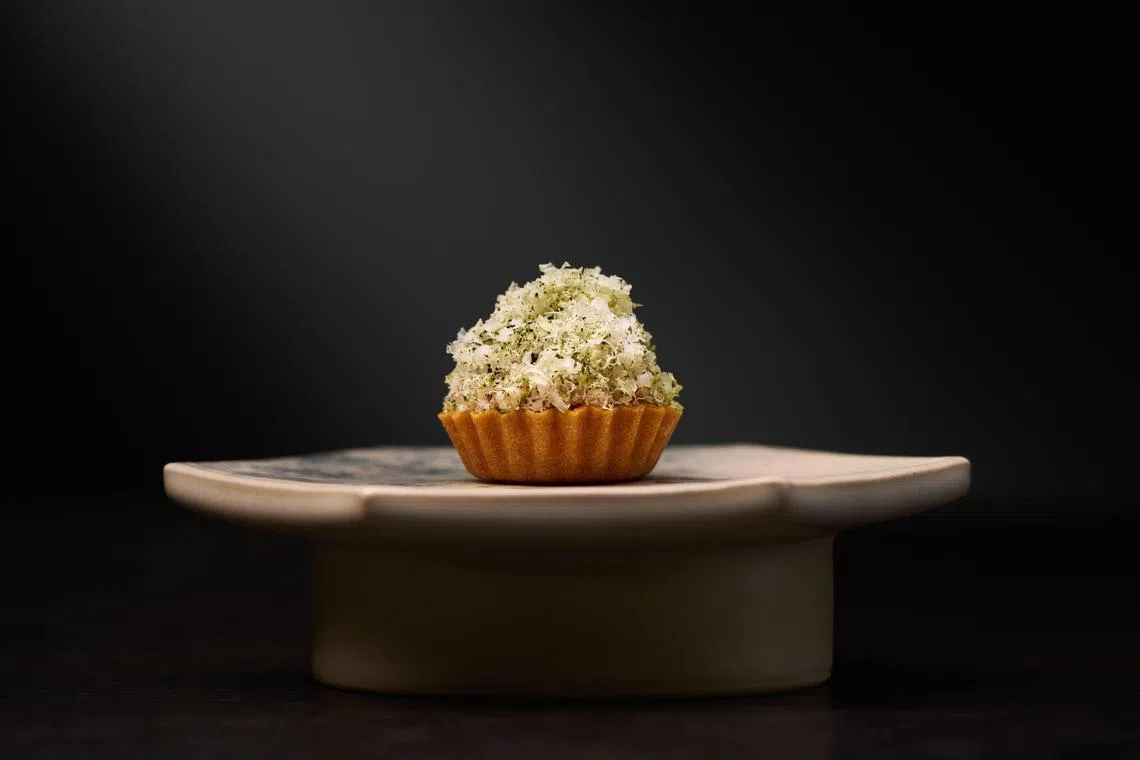
A few of the dishes are given final flourishes at your table. Later, petit fours and after-dinner drinks are served in a well-appointed drawing room. This fine-dining experience is certainly posh, but far from stuffy. A meal at Terre takes about three hours and diners will be tempted to linger even longer – unless they have an early tee-time at the resort’s golf course the next day.
Lodge in the Woods Kaba-Kaba, Kediri, Tabanan Regency, Bali
If ever you feel the need to go off-piste after clubbing in Canggu or surfing in Uluwatu, take a break in Kaba-Kaba, a quiet village near Bali’s west coast where rice fields are more plentiful than trendy restaurants and luxury holiday villas. Here, Singaporean Bernard Teo has created a haven of calm and tranquillity, delivering the kind of authentic, restorative experience that only Bali can offer.
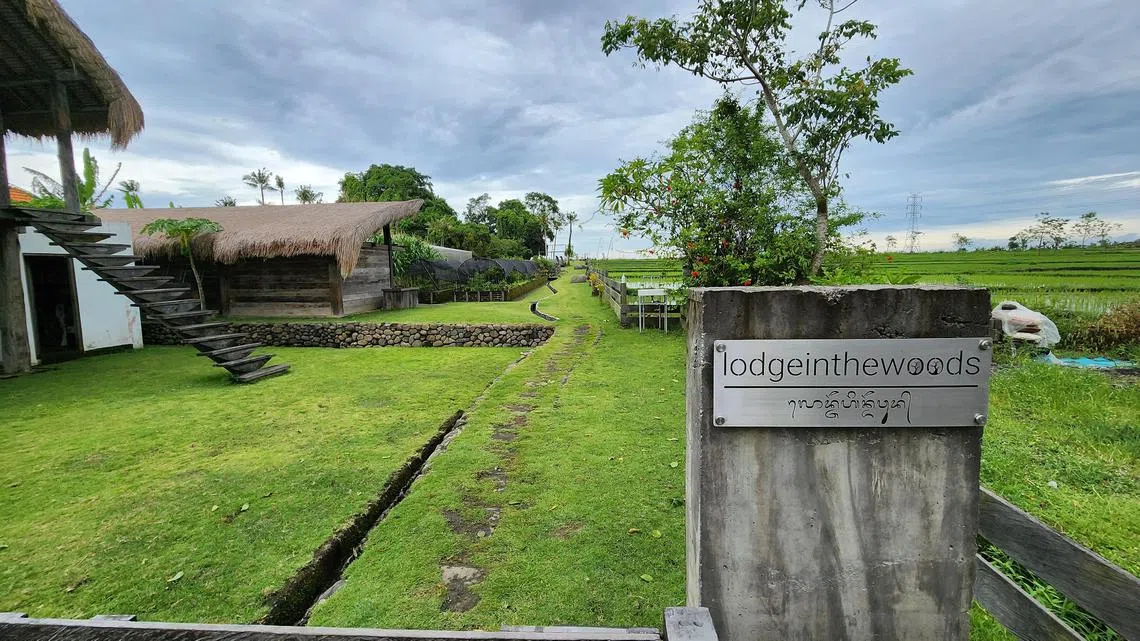
After a three-decade-long career in the fashion industry, Teo suffered an existential crisis. He moved to Bali and reconnected with nature. A simpler life beckoned. While the global pandemic raged, he worked in tandem with local communities to build a modernist hideaway in an untouched wooded area – all without felling a single tree. Lodge in the Woods is compact, comfortable and hidden from view, its low-rise concrete buildings blending into the environment.
Teo also transformed an adjacent plot into a vegetable garden that doubles as a sanctuary for rescue animals. Horses, goats and chickens (all white, his favourite colour) roam freely throughout the property, with handlers on hand to ensure good behaviour.
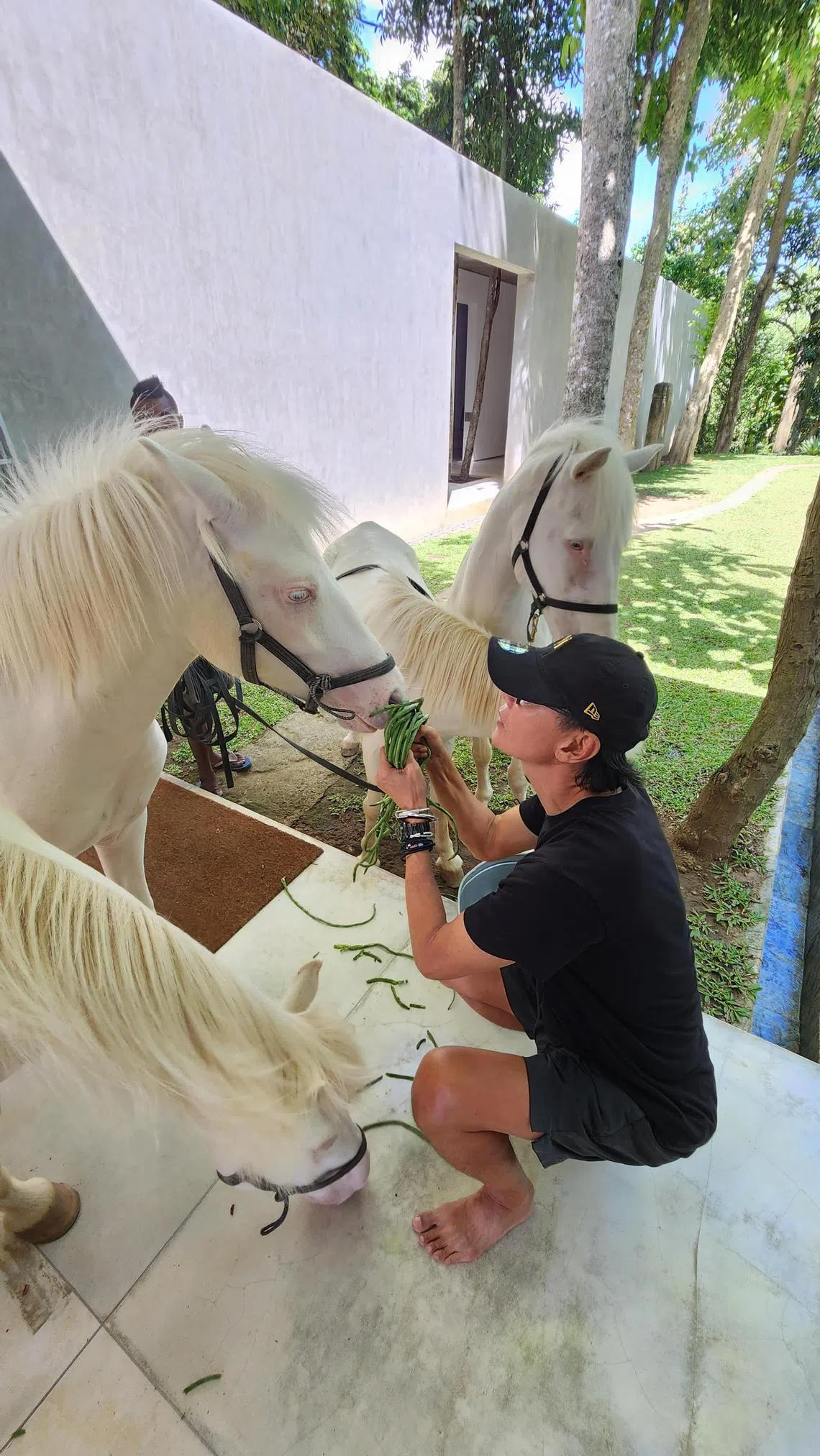
The lodge’s core principle is harmony with nature, respect for the environment. It’s a mantra that extends to the cuisine: healthy, fresh and flavourful. One of the lodge’s two kitchens focuses on farm-fresh, plant-based food, while the other prepares cooked dishes. Guests sit at a long table overlooking a swimming pool, mingle with fellow guests and commune with nature. They have the option to pick their own vegetables or accompany the lodge’s jukung (outrigger canoe) to sea when it goes fishing.
“Fermentation is really the foundation of our food,” says Teo. “We’re trying to revive traditional ways of cooking, and everything is cooked over a wood fire. The dining experience is a lot different from other places.” He adds: “A lot of places add sugar to their food but we try to keep our menu as natural as possible – it’s food from the garden. We believe in dips and hummus, soups and salads and sandwiches.” Currently, only hotel guests are able to dine at the lodge, but there are plans to open a cafe next to the vegetable garden, where diners will be able to enjoy soothing views of neighbouring rice fields and distant hills.
Decoding Asia newsletter: your guide to navigating Asia in a new global order. Sign up here to get Decoding Asia newsletter. Delivered to your inbox. Free.
Copyright SPH Media. All rights reserved.

